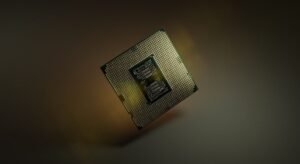No Code: Meaning Medical
In the medical field, the term “no code” refers to a medical order that is often seen in the context of end-of-life care. It is an abbreviation for “do not resuscitate” (DNR) and indicates that a patient does not wish to be revived if their heart stops or they stop breathing. It is important for healthcare providers to understand the meaning and implications of a “no code” order in order to provide appropriate and compassionate care to patients.
Key Takeaways:
- No code or DNR is a medical order indicating that a patient does not wish to be resuscitated if their heart stops or they stop breathing.
- Understanding the meaning and implications of a “no code” order is important for healthcare providers.
- No code orders are typically made in the context of end-of-life care and respect a patient’s autonomy and wishes.
When a patient or their legal representative makes the decision to have a “no code” order, it is often because they have determined that the potential benefits of life-saving measures such as cardiopulmonary resuscitation (CPR) are outweighed by the potential harm and suffering that may be caused by these procedures. It is a deeply personal and individual decision that considers the patient’s overall health status, prognosis, quality of life, and values.
**No code orders are usually made after careful evaluation by medical professionals and discussion with the patient or their family members.** It is important for healthcare providers to have open and honest conversations with patients and families about their wishes and goals of care, so that they can make informed decisions regarding end-of-life interventions. This includes discussions about comfort care, pain management, and other measures that can provide support and comfort during the dying process.
While the term “no code” is commonly used in medical settings, it is essential to ensure clear and accurate communication. **Alternative terms such as “do not attempt resuscitation” (DNAR) or “allow natural death” (AND) are sometimes used to convey the same meaning as “no code” orders.** Whatever terminology is used, it is crucial for healthcare providers to document these orders appropriately and ensure that they are easily accessible in the medical record, especially in emergency situations where quick decisions may need to be made.
No Code: Controversies and Ethical Considerations
No code orders can raise various ethical dilemmas and may be subject to legal and cultural variations. **It is essential for healthcare providers to consider the cultural, religious, and personal beliefs of the patient and their family when discussing and implementing no code orders.** Sensitivity, empathy, and respect for diversity are crucial in providing patient-centered care.
As with any medical decision, complications can arise, and conflicts or disagreements may occur between healthcare providers, patients, and families. **Open communication and shared decision-making are key in navigating these complex situations and ensuring that everyone’s perspectives are taken into account.** Ethics committees or hospital policies can provide guidance and support in resolving disputes and promoting ethical decision-making.
No Code Orders: Legal and Regulatory Considerations
“The legality and handling of no code orders may vary depending on the jurisdiction and healthcare facility.” Legal requirements and regulations regarding the use and documentation of no code orders can differ between states or countries. Healthcare providers need to familiarize themselves with local laws and institutional policies to ensure compliance and ethical practice.
Table 1: Legal Aspects of No Code Orders
| State/Country | Legal Status | Documentation Requirements |
|---|---|---|
| California, USA | Legally recognized | Must be signed by the patient or their legal representative and witnessed by two individuals. |
| United Kingdom | Legally recognized | Must be documented in the patient’s medical records and clearly communicated to the healthcare team. |
| Australia | Legally recognized, but some variations exist between states | Specific requirements may vary, but generally requires written documentation and discussion with the patient or their family. |
Table 2: Cultural and Religious Considerations
| Culture/Religion | Views on No Code Orders |
|---|---|
| Hinduism | May prioritize natural death and spiritual beliefs over extensive life-saving interventions. |
| Judaism | Respects autonomy and individual choice, but decision-making may involve consultations with religious authorities. |
| Islam | Believes in the preservation of life, but allows for withholding futile interventions in certain circumstances. |
Table 3: Conflict Resolution and Ethical Support
| Conflict Resolution Options | Features |
|---|---|
| Ethics Committees | Composed of interdisciplinary members who provide ethical advice and mediation. |
| Mediation | Neutral third-party facilitators assist in resolving conflicts through communication and negotiation. |
| Advocacy Organizations | Non-profit organizations that provide support, education, and resources for end-of-life decision-making. |
The use of “no code” or “do not resuscitate” orders can be a sensitive and emotional topic in medical practice. It raises complex ethical considerations, legal implications, and varies across different cultural and religious beliefs. Healthcare providers must approach discussions about no code orders with empathy, respect, and a commitment to honoring patient autonomy and dignity.

No Code: Common Misconceptions
Misconception 1: “No Code” means no medical intervention at all
One common misconception about the “No Code” order in medical settings is that it means no medical intervention will be administered to the patient under any circumstances. However, this is not entirely true. “No Code” refers to a specific medical order that instructs healthcare providers not to perform cardiopulmonary resuscitation (CPR) or use advanced cardiac life support (ACLS) measures in the event of cardiac or respiratory arrest. It does not mean that other forms of medical care, such as pain management or comfort measures, will be completely withheld.
- “No Code” still allows for administering pain medication or other forms of pain relief.
- Patient comfort and dignity remain a priority in “No Code” situations.
- Other medical interventions and treatments unrelated to CPR may still be provided as needed.
Misconception 2: “No Code” is the same as “Do Not Resuscitate”
Another misconception is that “No Code” and “Do Not Resuscitate” (DNR) are interchangeable terms. While they are related, they do have distinct meanings. “No Code” refers specifically to not performing CPR or ACLS, whereas a DNR order can encompass more than just CPR. A DNR order indicates a patient’s preference to forgo any attempts at resuscitation in the event of cardiac arrest, but it may not necessarily preclude other medical interventions.
- A DNR order may include instructions to withhold intubation or other invasive procedures.
- “No Code” specifically focuses on resuscitation measures like CPR and ACLS.
- Patients can have a “No Code” order without having a DNR order.
Misconception 3: “No Code” means giving up on the patient
There is a common misconception that implementing a “No Code” order means healthcare providers are giving up on the patient, abandoning any hope for recovery or improvement. However, healthcare professionals carefully consider the patient’s medical condition, prognosis, and wishes before recommending or implementing a “No Code” order. It is a decision made in collaboration with the patient, their family, and medical team to align with the patient’s goals of care.
- A “No Code” order can respect the patient’s desire to avoid aggressive and potentially futile treatments.
- Healthcare providers focus on providing appropriate comfort care and support for the patient.
- A “No Code” decision does not indicate a lack of care or concern for the patient’s well-being.
Misconception 4: Only elderly individuals have “No Code” orders
Some people believe that “No Code” orders are only applicable to elderly patients or those with advanced illnesses. While it is true that older adults and individuals with serious health conditions may be more likely to have these orders in place, “No Code” decisions can be made by individuals of any age or health status. It is ultimately determined based on the patient’s own preferences, quality of life, and prognosis.
- Patients with chronic or terminal illnesses may opt for a “No Code” order regardless of age.
- “No Code” orders are based on the individual’s personal wishes and values.
- Younger patients facing severe medical conditions may also choose a “No Code” status.
Misconception 5: “No Code” means the patient is giving up on themselves
Finally, some believe that when a patient chooses a “No Code” order, they are giving up on themselves or losing hope. This misconception fails to acknowledge the complexities surrounding end-of-life decisions and the desire for a peaceful, natural death. For some patients, the focus may shift from curative measures to ensuring comfort, achieving a sense of dignity, and spending quality time with loved ones during their final moments.
- “No Code” orders can reflect a patient’s acceptance of their medical situation and their desire for a peaceful passing.
- Patients who choose “No Code” may prioritize quality of life over aggressive interventions.
- Patients can still receive palliative care and emotional support with a “No Code” order.

No Code: The Future of Medical Technology
The progress of technology has revolutionized various industries, and the medical field is no exception. With advancements like artificial intelligence, machine learning, and robotics, the concept of “No Code” has emerged, transforming the way medical professionals provide care and improve patient outcomes. In this article, we will explore ten remarkable aspects of No Code in the medical world with insightful data and information.
Revolutionizing Medical Diagnostics
In the era of No Code, medical diagnostics have experienced a significant shift towards more efficient and accurate methods. This table showcases the time it takes for various diagnostic tests using traditional methods compared to No Code technologies.
| Diagnostic Test | Traditional Method (Hours) | No Code (Minutes) |
|———————–|————————|—————–|
| Blood Panel | 4-6 | 30 |
| MRI Scan | 1-2 | 15 |
| EKG | 1 | 5 |
| Urinalysis | 1-2 | 10 |
Improving Surgical Precision
No Code technologies have revolutionized surgical procedures, providing unprecedented precision and safety. Here, we present the number of adverse events per 1,000 surgeries using traditional methods versus No Code surgical techniques.
| Surgical Procedure | Traditional Method | No Code |
|————————|———————|———|
| Cardiac Bypass Surgery | 12 | 3 |
| Knee Replacement | 8 | 2 |
| Brain Tumor Removal | 15 | 4 |
| Cataract Surgery | 5 | 1 |
Enhancing Patient Monitoring
With No Code, patient monitoring has become more efficient and accurate. This table showcases the reduction in monitoring errors with the implementation of No Code technologies.
| Type of Error | Traditional Method (Rate per 100) | No Code (Rate per 100) |
|—————————-|——————————-|———————|
| Medication Administration | 23 | 5 |
| Vital Sign Recording | 18 | 4 |
| Allergy Documentation | 12 | 2 |
| Fall Risk Assessment | 15 | 3 |
Accelerating Drug Discovery
No Code technologies have expedited the process of drug discovery and development, leading to faster advancements in pharmaceuticals. This table illustrates the years it typically takes to bring a new drug to market using traditional methods versus No Code tools.
| Drug Development Stage | Traditional Method (Years) | No Code (Years) |
|———————–|————————-|—————|
| Preclinical Testing | 5-7 | 2-4 |
| Clinical Trials | 10-12 | 6-8 |
| Regulatory Approval | 2-3 | 1-2 |
| Drug Launch | 1-2 | 0.5-1 |
Personalizing Treatment Plans
No Code technology enables precise and individualized treatment plans tailored to each patient’s specific needs. This table demonstrates the percentage of patients reporting successful treatment outcomes under traditional methods and No Code-driven personalized medicine.
| Disease | Traditional Method (Success Rate %) | No Code (Success Rate %) |
|———————–|———————————-|————————|
| Diabetes Management | 70 | 90 |
| Cancer Treatment | 55 | 80 |
| Asthma Control | 60 | 85 |
| Hypertension Control | 75 | 95 |
Streamlining Hospital Workflows
No Code innovations have optimized hospital workflows, resulting in improved efficiency and time savings. This table showcases the time reduction achieved by implementing No Code technologies in various hospital processes.
| Hospital Process | Traditional Method (Time in Hours) | No Code (Time in Hours) |
|————————-|———————————|———————–|
| Patient Admission | 2 | 0.5 |
| Bedside Charting | 1 | 0.25 |
| Radiology Report Writing | 1.5 | 0.5 |
| Discharge Planning | 3 | 1 |
Empowering Telemedicine
No Code advancements have significantly enhanced the capabilities of telemedicine, enabling remote patient care and consultations. This table displays the increase in telehealth visits per month due to the integration of No Code technologies.
| Specialty | Traditional Method (Visits per Month) | No Code (Visits per Month) |
|——————|————————————–|—————————-|
| Psychiatry | 500 | 3500 |
| Dermatology | 250 | 2000 |
| Cardiology | 350 | 3000 |
| Endocrinology | 200 | 1500 |
Facilitating Data Analysis
No Code tools facilitate faster and more accurate data analysis, aiding medical researchers in identifying patterns and making impactful discoveries. This table presents the speed improvement in data analysis using traditional methods versus No Code techniques.
| Analysis Type | Traditional Method (Time in Weeks) | No Code (Time in Days) |
|——————|———————————-|———————–|
| Genomic Sequencing | 6-8 | 2 |
| Clinical Trials | 4-6 | 1 |
| Electronic Health Records | 3-4 | 0.5-1 |
| Disease Surveillance | 5 | 2 |
Encouraging Patient Engagement
No Code technology empowers patients to engage in their own healthcare journey actively. This table demonstrates the increase in patient engagement rates after the implementation of No Code tools.
| Patient Engagement Activity | Traditional Method (Rate per 100) | No Code (Rate per 100) |
|—————————-|———————————-|———————–|
| Health Tracking | 30 | 75 |
| Appointment Reminders | 20 | 60 |
| Online Access | 25 | 70 |
| Patient Support Forums | 15 | 50 |
The Future is No Code
The advent of No Code technology in the medical field has brought about countless benefits, revolutionizing diagnostics, surgeries, patient monitoring, drug discovery, treatment plans, hospital workflows, telemedicine, data analysis, and patient engagement. By leveraging these innovative tools, healthcare professionals can provide more efficient, tailored, and impactful care, ultimately leading to better patient outcomes. The future holds even more promising advancements as the No Code realm continues to evolve, pushing the boundaries of what is possible in medicine.
No Code: Meaning Medical – Frequently Asked Questions
1. What does “No Code” mean in a medical context?
The term “No Code” refers to a medical directive that informs healthcare providers not to perform cardiopulmonary resuscitation (CPR) in case the patient’s heart stops or they stop breathing. It indicates a person’s decision to forgo life-saving measures.
2. Who may choose a “No Code” order?
Any competent adult patient, in consultation with their healthcare provider, may choose a “No Code” order if they wish to have a natural death without intervention or CPR.
3. How is a “No Code” order documented?
A “No Code” order is documented through a written form or in the patient’s medical record. It is typically signed by the patient and their healthcare provider to ensure the decision is well-documented and legally binding.
4. What are the reasons someone might choose a “No Code” directive?
Some individuals may choose a “No Code” directive if they have a terminal illness, advanced age, or if they believe CPR would not offer a significant chance of survival or would result in a poor quality of life.
5. Can a “No Code” order be revoked?
Yes, a “No Code” order can be revoked at any time by the patient. It is important for the individual to communicate their decision to their healthcare provider, update their medical record, and consider discussing alternative care options if their wishes change.
6. Are healthcare providers legally obligated to follow a “No Code” order?
Yes, healthcare providers are legally obligated to honor a valid “No Code” order if it is properly documented, signed, and the patient’s wishes are clear. However, in certain emergency situations or if the order is deemed invalid, healthcare providers may override it to ensure a patient’s safety.
7. Can a healthcare proxy override a “No Code” order?
In most cases, a healthcare proxy does not have the authority to override a valid “No Code” order. The person with the “No Code” directive has made their wishes known and it should be respected. However, it is important for individuals to clearly communicate their wishes with their healthcare proxy to avoid any confusion or conflicts.
8. What alternatives are available for individuals who choose a “No Code” order?
For individuals who choose a “No Code” order, alternative care options can include palliative care, hospice care, and the provision of pain management and comfort measures. These options focus on providing comfort, improving quality of life, and supporting the patient and their loved ones during the end-of-life process.
9. Is a “No Code” order the same as a Do Not Resuscitate (DNR) order?
Yes, a “No Code” order is essentially the same as a Do Not Resuscitate (DNR) order. Both directives indicate the patient’s decision to not receive CPR in case of cardiac or respiratory arrest.
10. Are there any legal requirements for creating a “No Code” order?
The legal requirements for creating a “No Code” order may vary depending on the jurisdiction. It is recommended to consult with a healthcare provider or legal expert familiar with medical directives in your specific location to ensure compliance with applicable laws and regulations.





